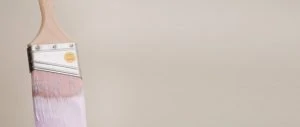You don’t necessarily need to repaint the entire room to maintain the rich color and smooth finish of your interior walls. There is another way to fix the dents, dings, scratches, and marks on your interior walls that can create a negative effect. For example, you can touch up some of the
The most important thing you need to remember before adding some touch ups on your interior walls is to repair all dents, small holes, and scratches. However, before you make repairs, you need to clean the area by using a sponge, mild detergent and water. Over the time, dirt and dust can build up on your interior wall’s surface and this can affect paint adhesion when you add touch-ups. This is the reason you need to wipe out the surface with a soapy sponge and then dry it with a soft towel before starting.
Repairing the Issues:
As mentioned, you need to repair all dents, holes, scratches etc with spackling compound. Before you start repairing, use a fine grit sandpaper to smooth the surface around the area to be repaired. This is important as it helps to remove any fragments or raised portions of the wall.
Priming the Surface:
Another important thing that you need to perform before proceeding with the touch ups is to prime the repaired areas of your interior walls. Priming ensures optimal paint adhesion and color blending. If you do not prime the areas, the touched up spots will look awkward as they will stand out from the rest of the painted surface. To get the best result, you need to choose a high quality, interior latex primer and apply a layer of primer over the surfaces by using a small or medium-sized paintbrush.
Using the Same Paint:
If you do not use the paint color from the same can for touch-ups, it would really be difficult to match the color exactly. Therefore, if possible you should store the leftover paint so that you can use the same in future for touchups. However, if you don’t have any leftover paint, you need to use the same paint, brand and finish. Another important thing is to use the same applicator that was used to apply the last coat of paint on the interior walls. For example, if you used a roller, use the same roller again for the touchups.
